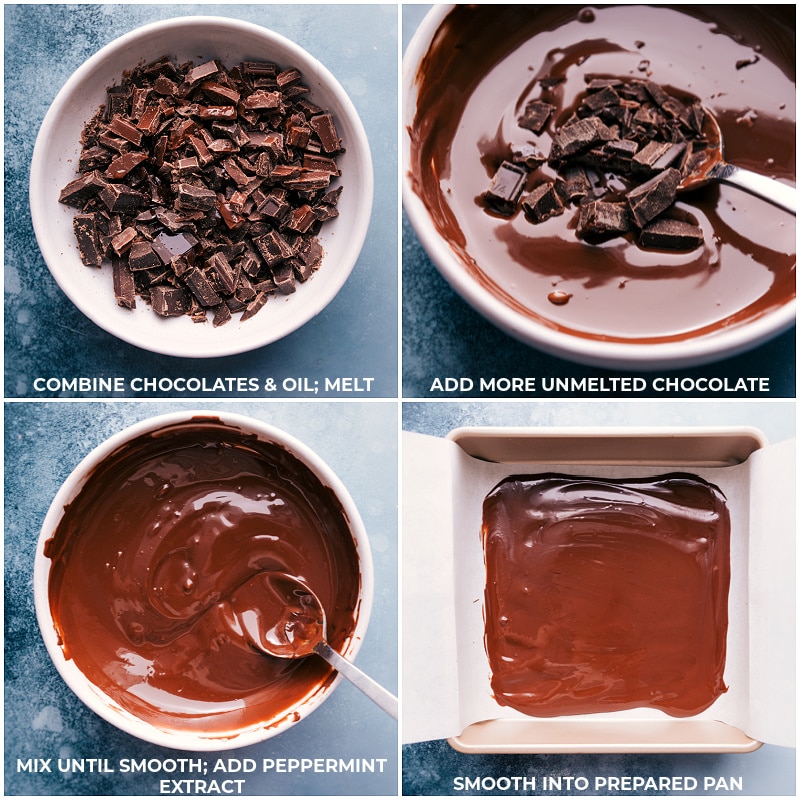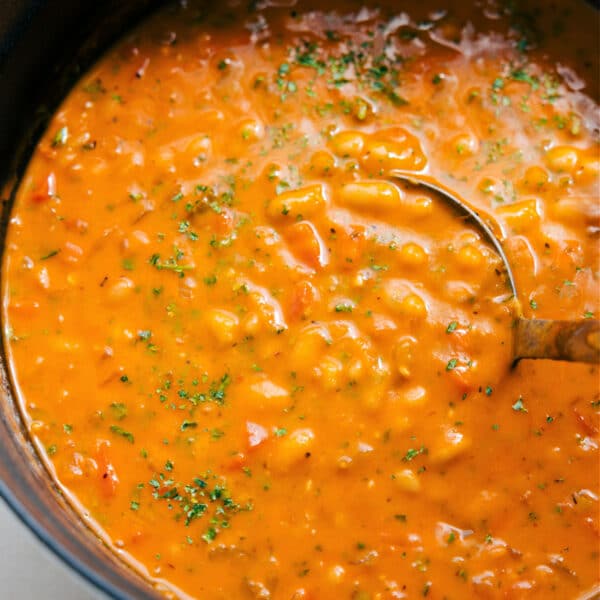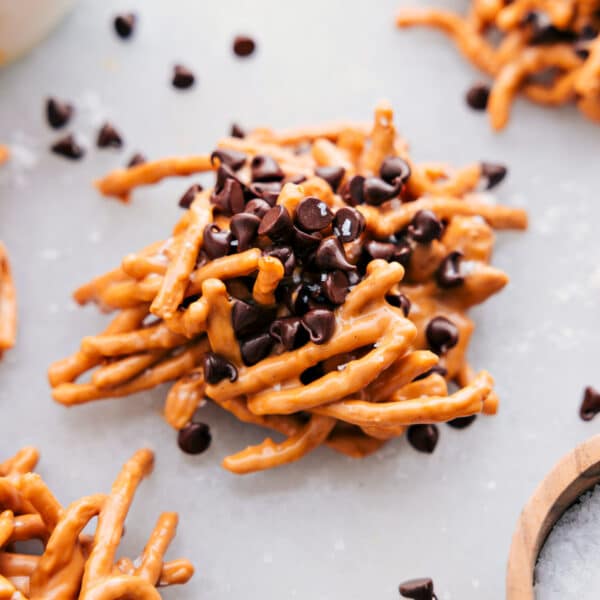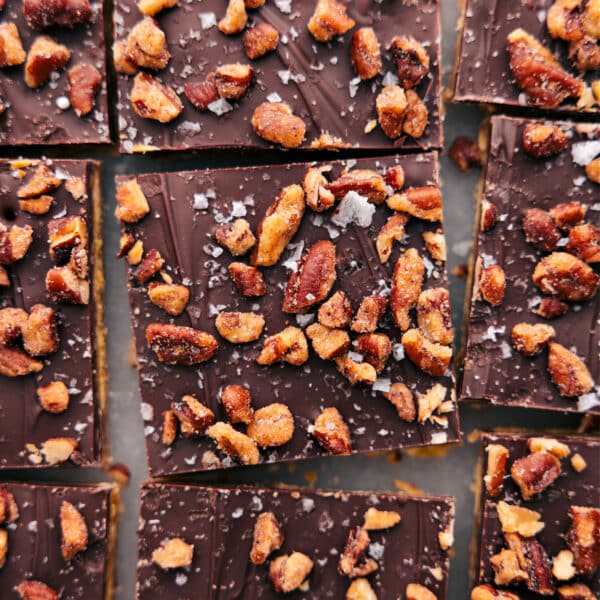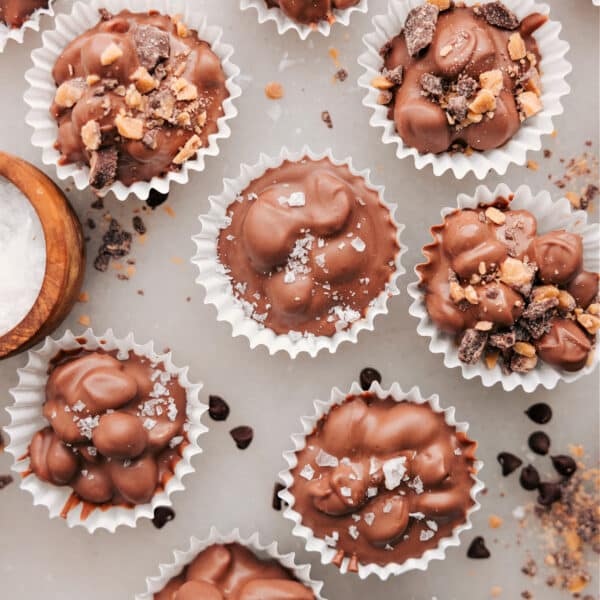The best Peppermint Bark recipe, made with three types of chocolate and topped with crushed peppermint—can holiday treats get any better?!
Try some other favorite peppermint goodies like Peppermint Bark Pretzels, Peppermint Muddy Buddies, and Peppermint Bark Cookies!
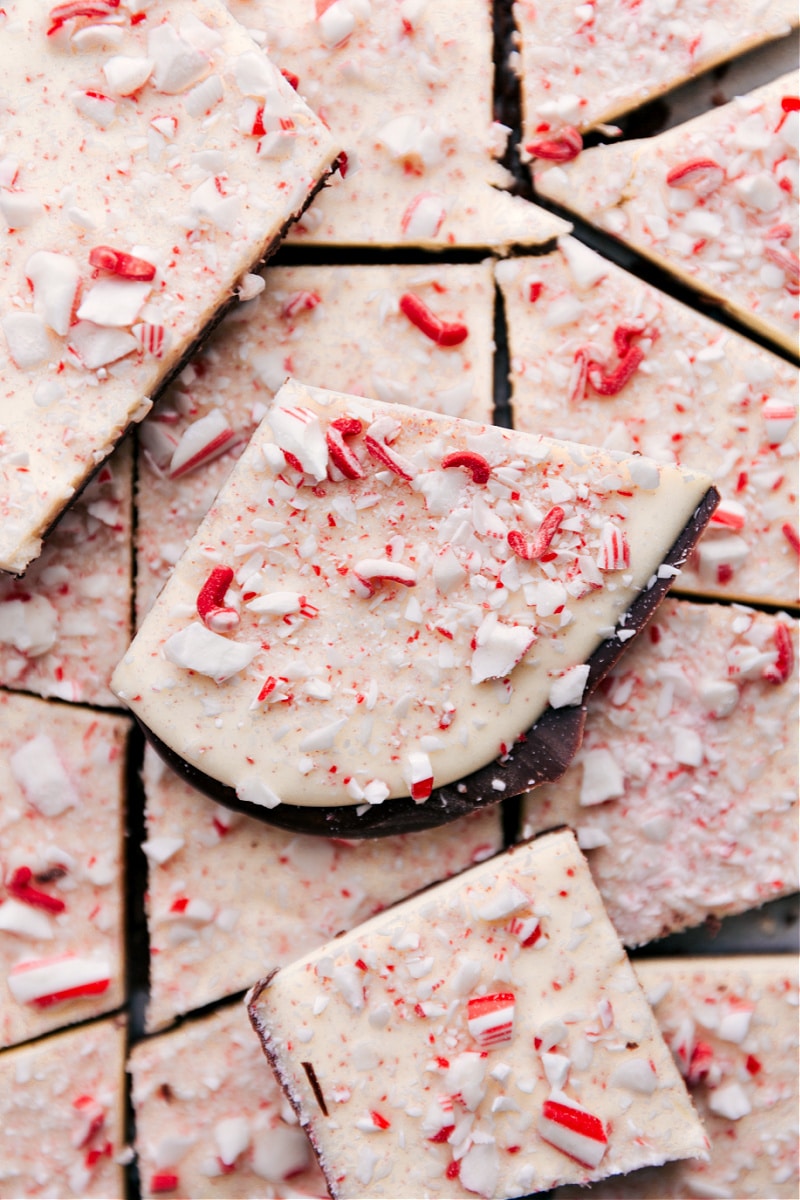
My Favorite Peppermint Bark Recipe
In my home, Christmas celebrations start with a batch of Peppermint Bark—it’s my favorite holiday treat!
Growing up, December meant nonstop baking with Mom (Carmelitas and 7 Layer Bars were our go-tos), but we’d usually skip candy making and grab a bag of Ghirardelli® peppermint bark instead.
The past few years, I’ve been getting my kids involved in candy making (they love Buttercrunch Candy; I’m all about Toffee), and I decided it was time to skip the store-bought peppermint bark and make our own!
Homemade bark lets you mix and match chocolates, adjust the peppermint flavor, and break pieces as big or small as you’d like. Nothing compares to homemade!
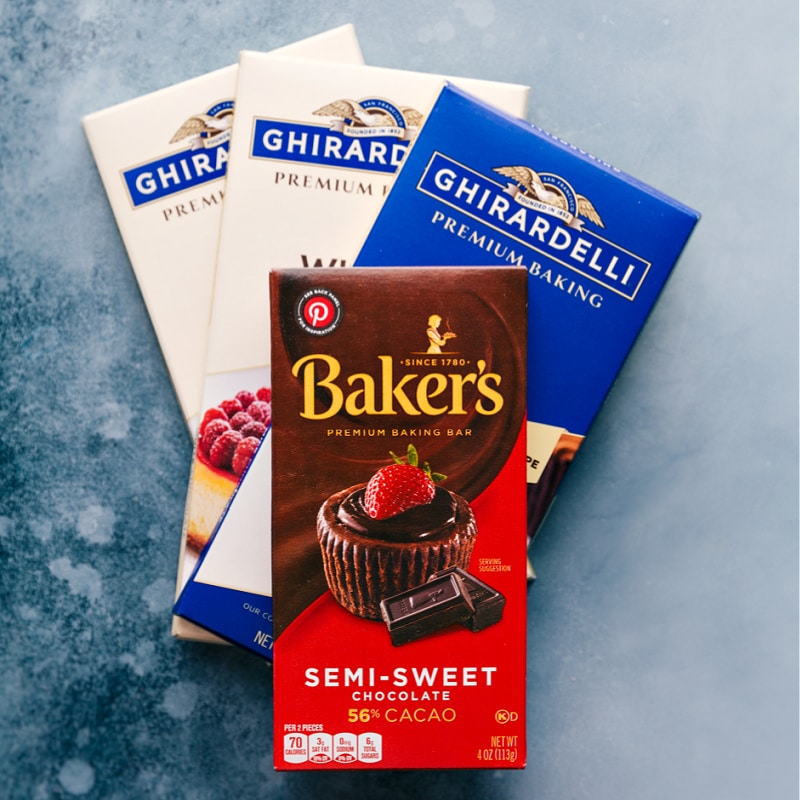
Peppermint Bark Recipe Ingredients
- Candy Canes: Double bag before crushing candy canes to avoid tearing.
- White Chocolate: Use baking bars instead of chips for better melting.
- Chocolate: Use dark, semi-sweet, or milk. Save a small amount to stir in after melting for a glossy finish.
- Vegetable or Coconut Oil: Keeps the chocolate smooth and easy to pour.
- Peppermint Extract: Start small and adjust to your preferences.
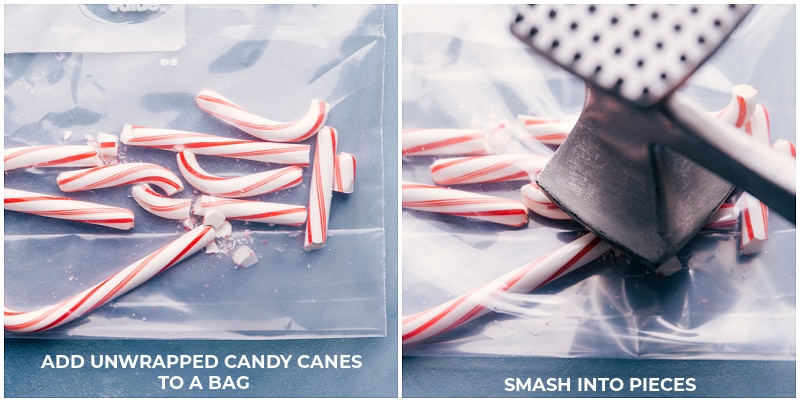
How To Crush Peppermint
Before making the bark, crush the peppermint!
- You can use candy canes or hard peppermint candies, but aim for small chunks, not powder.
- Put the unwrapped candies in a strong plastic bag (use two bags to stop tearing), seal out the air, and smash them with a rolling pin or meat mallet.
- Skip blenders or food processors—they make candy too fine.
How To Make Peppermint Bark
- Crush Peppermint: Break candy canes or peppermint candies into small pieces.
- Melt Chocolate: Gently melt semi-sweet and white chocolate with a little oil.
- Layer: Spread the first chocolate, pour the white chocolate on top, and sprinkle peppermint pieces.
- Set: Let it cool and harden, then break into chunks.
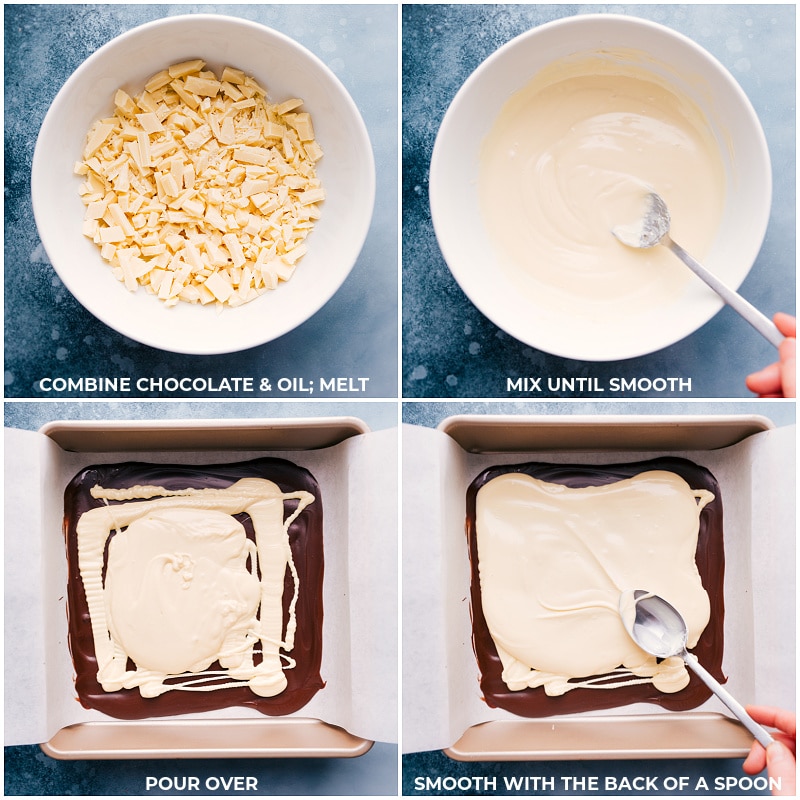
Tips For Success
- Melt most of the chocolate, then mix in some unmelted pieces to cool it down and keep it smooth and shiny.
- Use strong, microwave-safe bowls (skip plastic or melamine).
- Heat in 15-second bursts, stirring for 15 seconds in between to avoid burning. Chocolate keeps melting from leftover heat—don’t overheat!
Quick Tip
Melting the chocolate slowly and stirring often keeps it smooth and streak-free. Adding a bit of unmelted chocolate at the end cools it down and helps it set firm at room temp.
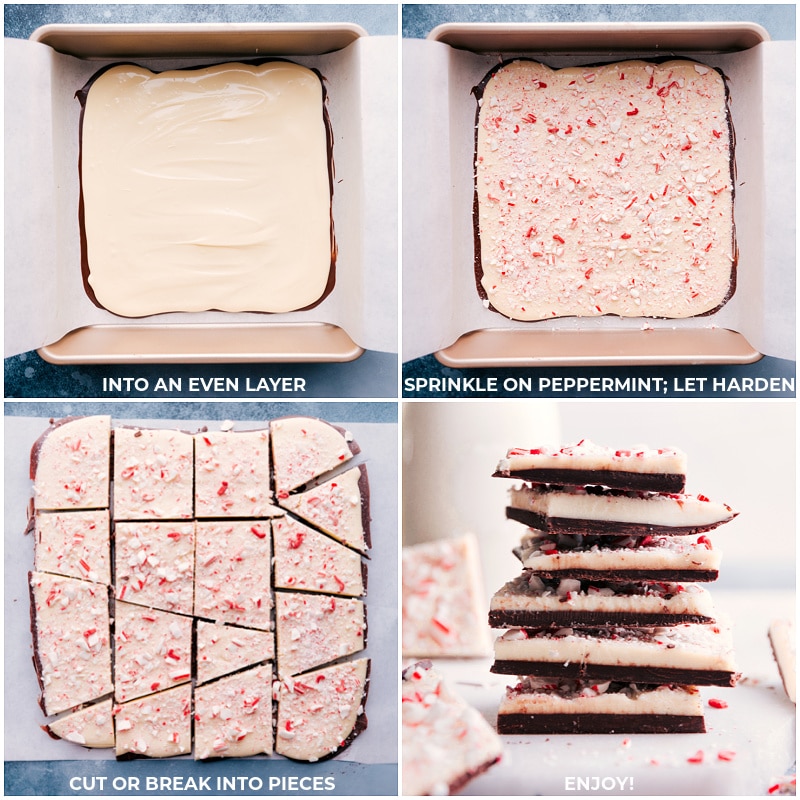
Peppermint Bark FAQs
Can I Speed Up The Process By Refrigerating?
You might be tempted to put the pan in the fridge between layers but his can cool the chocolate too quickly, leading to a streaky appearance.
How Do You Cut Peppermint Bark?
To cut this white peppermint bark instead of breaking it, use a large, sharp knife. Heat the knife under hot water, dry it with a towel, and make a quick, firm cut. Repeat for each cut.
How Do You Keep Layered Peppermint Bark From Separating?
Several factors can cause separation:
-Chocolate with palm oil (often in chips or morsels) can stop layers from sticking.
-Waiting too long to add the second layer—pour it as soon as the first is set.
-Not letting the bark set fully—the longer it sets, the less likely layers will split.
-Breaking the bark before it’s room temperature—if it’s too cold, layers can separate.
-Putting the bark in the fridge or chilling it.
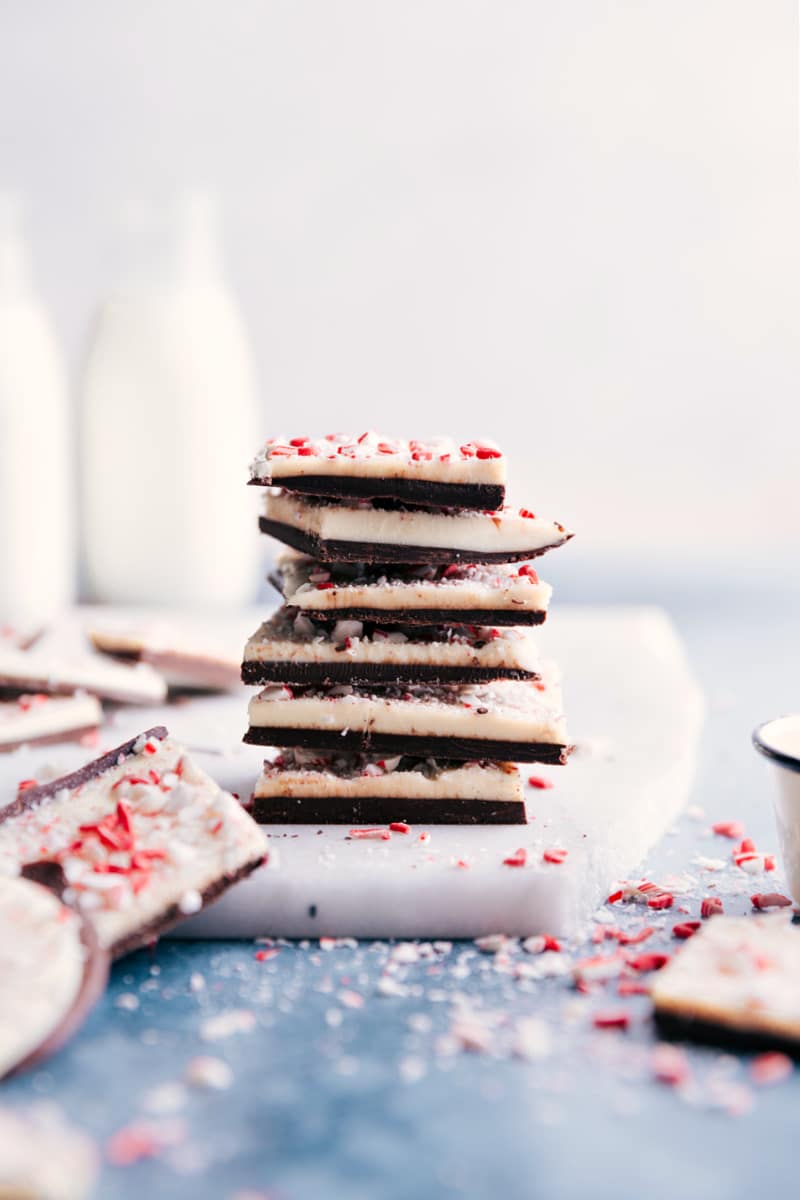
Storage
Homemade Peppermint Bark Storage
Peppermint Bark is best enjoyed within two weeks if stored properly. Keep it in a tightly closed container in a cool, dark spot at room temperature. No need to refrigerate.
More Christmas Treats
- Christmas Snack Mix with red and green M&M’s
- Christmas Oreo Pops with 4 different ideas
- 3 Ingredient Christmas Cookies
- 6 Easy Christmas Gifts with free printables
- Santa Cookies with red and green M&M’s

Peppermint Bark Recipe
Equipment
- 8 x 8-inch baking pan or 9 x 9-inch
Ingredients
- 2 to 3 full-sized candy canes about 1/3 cup when crushed
- 8 ounces white chocolate baking bar see note 1
- 4 ounces semi-sweet baking bar
- 2 ounces milk chocolate or more semi-sweet or dark
- 1 teaspoon vegetable oil or coconut oil, divided
- 1/4 up to 1/2 teaspoon peppermint extract
Instructions
- Add unwrapped candy canes to a large plastic bag (or 2; the peppermint has a tendency to rip through plastic bags as it is crushed). Seal the bag without air, and crush with a rolling pin or meat mallet until coarse crumbs are formed. Set aside.
- Line an 8×8 or 9×9-inch pan with parchment paper, leaving an overhang for easy removal. Set aside. Coarsely chop the white, semi-sweet, and milk chocolate. Tip: Be patient when melting the chocolate and avoid rapid temperature changes (don’t microwave too long or excessively, stir too much, or refrigerate/freeze layers of finished bark).
- Add all except 2 tablespoons (see note 2) of the chopped semi-sweet and milk chocolate to a large microwave-safe bowl. Add 1/2 teaspoon oil. Microwave for 15 seconds, then stir vigorously for 15 seconds. Continue until chocolate is mostly melted. You never want the chocolate to get hot, just warm enough to melt gradually; once it's smoothly melted, it should be room temperature. Once chocolate is mostly melted, add the set-aside 2 tablespoons of chocolate and stir until it melts. Be patient and don’t microwave unless it isn’t melting after stirring for 1 minute. (Then microwave in bursts of 5 seconds.)
- Once chocolate is fully melted and smooth, pour in the peppermint extract (use 1/2 tsp for a stronger peppermint flavor) and mix to combine. Pour the chocolate mixture into the prepared pan and smooth in an even layer with a spatula. Do not refrigerate. Set aside at room temperature.
- Add all except 2 tablespoons of the chopped white chocolate to a large microwave-safe bowl. Add 1/2 teaspoon oil. Follow the directions above for melting. Add the reserved 2 tablespoons white chocolate and mix until melted. Once smooth, drizzle evenly on top of the chocolate base layer until all the chocolate is poured on top. Carefully and slowly smooth the white chocolate into an even layer with the back of a spoon, being careful to not swirl the two layers together. Immediately, sprinkle the crushed candy canes on top (add as much or as little as you’d like). Set aside at room temperature (not in the fridge) until the bark is completely hardened, about 3–5 hours.
- Once hardened, remove from the pan using the overhang. Break or cut (see note 3) into pieces as big or small as you’d like. Enjoy!
Video
Recipe Notes
Nutrition
Nutrition information is automatically calculated, so should only be used as an approximation.
